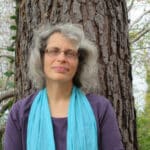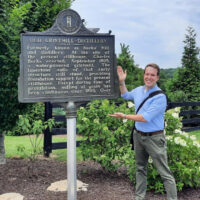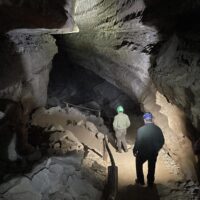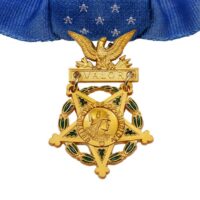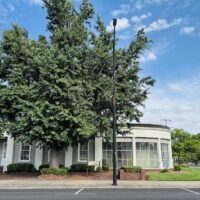Photographer Andrew Feiler remembers the moment he first heard about Rosenwald schools. After publishing his first book, “Without Regard to Sex, Race, or Color,” containing images of an abandoned historically Black college, he was having lunch with a friend. She told him about the collaboration between Julius Rosenwald, a northern Jewish American philanthropist and head of Sears, Roebuck, and Co., and Booker T. Washington of Tuskegee Institute, a southern leader in education for African Americans. Their groundbreaking partnership resulted in the construction of nearly 5,000 schools for African American students across 15 southern and border states from the 1910s to 1930s.
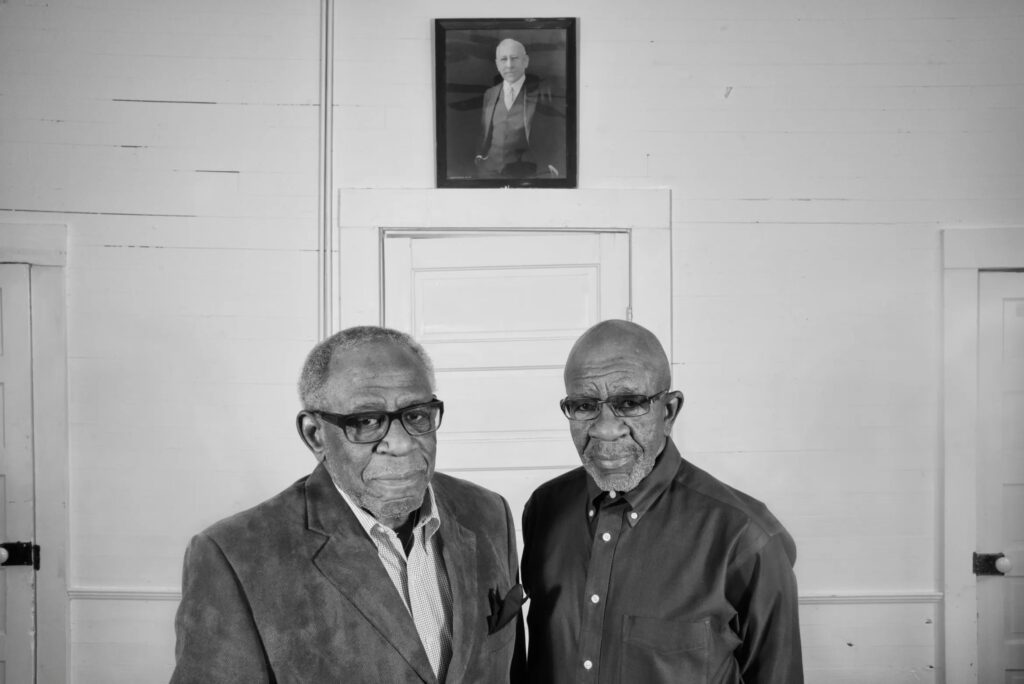
“I’m a fifth generation Jewish Georgian,” Feiler said in an interview with the Daily Yonder. “I have been a civic activist my entire life; the pillars of this story are the pillars of my life. How could I have never heard of Rosenwald schools? I found out there was not a comprehensive photographic account of the program, so I set out to do exactly that.”
Over the next three and a half years, Feiler photographed 105 of the approximately 500 surviving schools. He began with a mostly architectural interest, capturing exterior and interior images of the clapboard and red brick structures. He soon realized that while the buildings were interesting, the story was much richer when the voices of former students and their families were included. As a result, his book and exhibit, both called, “A Better Life for Their Children: Julius Rosenwald, Booker T. Washington, and the 4,978 Schools that Changed America,” integrate portraits and images of facilities. Each is accompanied by a short narrative explaining intersections with critical moments in history, like the Trail of Tears and the Great Migration.

Constructed
The Rosenwald school program has been lauded as one of the most transformative developments in the first half of the 20th century in America. Its focus was the rural south. In the primarily agrarian economy of the 1910s, the vast majority of African American school children were served by inadequate or nonexistent schools, which created a large and pervasive Black-white education gap in the south. That gap had significantly narrowed by World War II. Historical research has shown that Rosenwald schools were the most significant factor in this change.
Rosenwald and Washington’s unlikely partnership facilitated this change, as they worked across racial, religious, and geographic differences themselves. Guided by the idea of self-help, the two devised a model to construct local schools: Once African American communities gathered and raised their own contributions of land or labor and solicited a donation and maintenance commitment from the white school district, Rosenwald provided the remaining construction funds. The schools are not named for Rosenwald and most do not denote his legacy in any way. By 1928, one third of rural Black southern students, hundreds of thousands of them, were educated in a Rosenwald school. Many prominent African Americans were students, including Congressman John Lewis and poet Maya Angelou.
Endangered
Carrying on this legacy, Feiler hoped his photography would bring viewers into this shared history and inspire them to get involved. He and other advocates are building momentum towards preserving the buildings that hold these stories. The catalyst was a 2002 memo by the National Historic Trust which identified the school structures as one of the 11 most endangered historic places in the U.S.
“When I found out that only half of the surviving schools had been restored, I realized that the historic preservation narrative was critical to this story,” explained Feiler. “These spaces are the locus of history and memory and community. And when we lose places like this, we lose a piece of the American soul.”
The Merritt School in rural Bullock County, Alabama, is one of those endangered places. A grassroots community group led by resident Essie Thomas is working to restore the structure and revive its history. Even though Thomas and her father both attended the school, she did not learn about its Rosenwald connection until she went to college. But she always understood the effect it had in her life.

“Even though we had used books, we were taught we could succeed,” Thomas said in an interview. “Never, never in my attending there did I feel I wasn’t as important as anyone else, white or Black.”
Rosenwald schools are one piece of the broader story of segregation-era schooling in the south. When the landmark Brown v Board of Education Supreme Court decision in 1954 mandated integration in education, many southern states resisted. An Alabama program to modernize segregated schools, called equalization schools, attempted to prove that separate was truly equal by constructing another school, in 1966, directly behind the Merritt School. Construction plans even detailed removing the cornerstone of the original Rosenwald school to serve as the foundation of the new equalization building.
After college, Essie Thomas returned to Bullock County and taught at the Merritt School for several years. She recalled that the Black student-serving campus didn’t close until the 1970s. Soon after that, the historic Rosenwald building came under threat of demolition. It was saved by the community, who safeguarded its future by adding it to the National Register of Historic Places. In 2002, Thomas’ group became a nonprofit and took on the task of preserving the building and its history. They envisioned a lively community center that shares stories from the past and opportunities for the future. Five years ago, the Merritt School also became a polling location. This building, originally a symbol of democracy and citizenship, now welcomes community members exercising their right to vote.
A few years ago, the Merritt School advocates and those in other Alabama communities found a new partner in Gorham Bird, an architecture professor at Auburn University. Bird has done extensive research on the Rosenwald school program in the state and is aiding in the pursuit of preservation funds. Together, they secured a state grant of $175,000 to strengthen the Merritt School’s foundation.
Bird has dedicated the last four years to identifying the remaining Rosenwald school buildings in the state. Of the original 400 structures, his team has located 16. He has gained a deep appreciation for Washington’s seminal role in envisioning the schools and garnering support for them. In recognition, some historians now refer to them as Washington-Rosenwald Schools.

The Auburn University group’s research on segregation era schools was recently on exhibit at the Museum of Alabama. At the opening, Rosenwald alumni and preservation groups from across the state gathered and shared experiences, many had never met before. Bird hopes this is the beginning of new opportunities for local groups to gather, learn, and share their preservation efforts.
Memorialized
Dorothy Canter never imagined that a last-minute movie outing would inspire her to launch a major multi-year project. In 2015, she and her late husband watched the “Rosenwald” documentary and were blown away. Jewish herself, with previous board service on the nonprofit National Parks Conservation Association, Carter envisioned a new national park that would encompass the many facets of this story.

It takes years for a new park to be adopted by the U.S. Congress, and this one is particularly complex. The multi-state park concept includes a main visitors center at the old Sears Roebuck building in Chicago, a small number of Rosenwald schools, and a network of other associated schools that are not officially part of the park. The satellite schools must be enfolded into the management of a nearby national park site. If established, the Julius Rosenwald & Rosenwald Schools National Historical Park will be the first in the country to honor a Jewish American.
After receiving approval from Congress based on a 2018 historical context study, the National Park Service considered 12 different sites in a special resource study in 2021. The report found the Rosenwald school story has national historical significance. The report was released in June of 2024, and in September legislation was introduced in both houses of congress to establish a National Historical Park. It has not had a hearing yet.
The artists, historians, and advocates that are working to keep this history alive believe it speaks to the best part of our humanity and holds wisdom for our present moment.
“We live in a deeply divided America,” said Feiler. “Julius and Booker fundamentally changed this country for the better. The heart of this story is one of optimism. For all of those people who want change in America, this story is a reminder that we can work together and that individual actions matter.”
Andrew Feiler’s exhibition is currently on display at the Bullock Texas History Museum, and the Virginia Museum of History and Culture.
This story is republished with permission from The Daily Yonder. Read the original.
Kim Kobersmith lives in Berea, Kentucky. She has written extensively for the Daily Yonder about rural food, recreation, arts and culture, and development.
